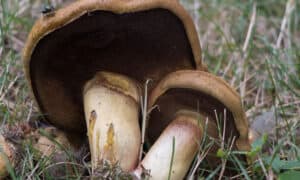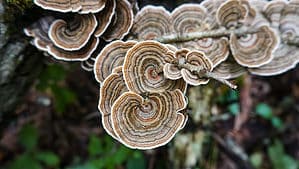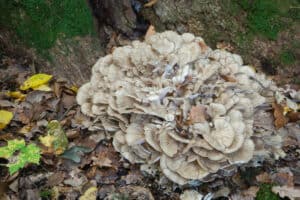You’ve probably heard of the shiitake mushroom on many occasions and eaten them on many more. The mushroom is one of the most popular in the world despite being pricey. It has been cultivated for millennia for use in both culinary and herbal medicine fields.
We’ll look at how to use it, where it comes from, and why it has its name.
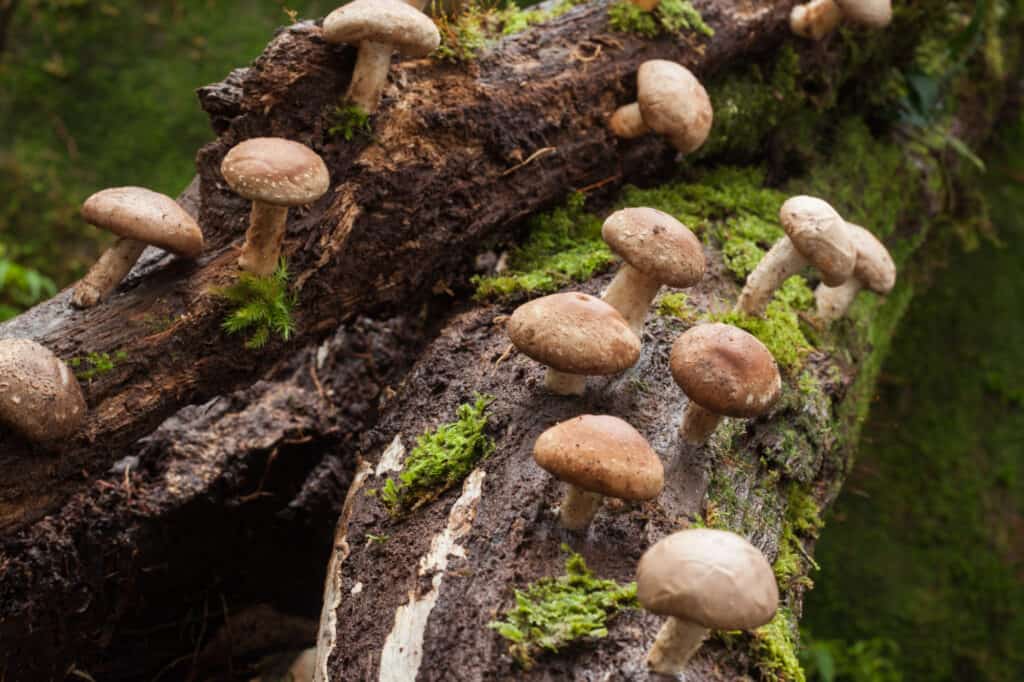
Shiitake mushrooms are expensive but popular for culinary and medicinal use.
©puttography/Shutterstock.com
Shiitake Mushroom Classification
The scientific name for shiitake mushrooms is Lentinula edodes. These mushrooms are called Shiitake, shitake, dongo, shanku, Shiang-gu, oak mushroom, black forest mushrooms, umami, and Chinese black mushrooms. Shii is Japanese for the type of evergreen tree that the shiitake mushrooms grow in (shii + take = shii mushroom). They are a member of the Omphalotaceae family.
This species of mushroom is a saprotroph, meaning it feeds on dead tissue of trees.
Where Do Shiitake Mushrooms Grow?
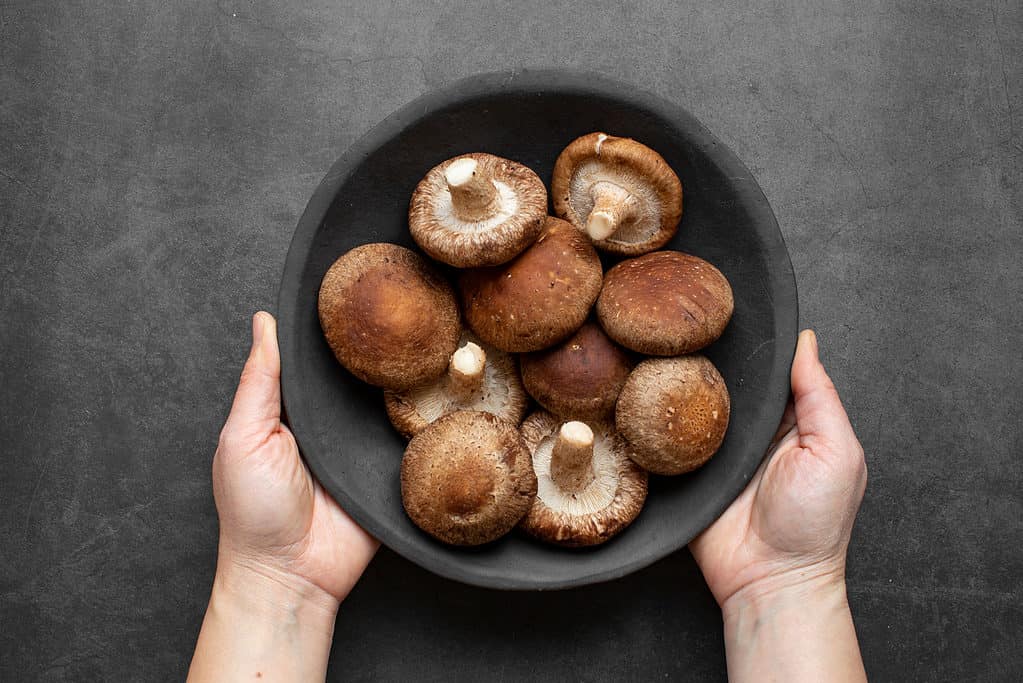
These mushrooms are known as Shiitake, shitake, dongo, shanku, Shiang-gu, oak mushroom, black forest mushrooms, umami, and Chinese black mushrooms.
©itchima/Shutterstock.com
The mushroom has taken the name of its favorite place to grow: the shii tree, a species from Japan. The mushroom also grows in groups on the decaying wood of other deciduous trees. These are chestnuts, oaks, maples, sweetgums, beeches, chinquapins, poplars, ironwood, mulberries, and hornbeams.
History of the Shiitake Mushroom

The samurai warriors played a strong role in the cultivation of shiitake mushrooms.
©siriwat sriphojaroen/Shutterstock.com
Shiitake mushrooms grow throughout the mountainous regions of Southeast Asia in particular, in Japan, China, and Korea. They primarily grow on fallen logs and dead trees. The mushroom has been in use for at least 1,200 years. It is a food and traditional medicinal ingredient throughout East Asia. The earliest written record of the mushroom’s cultivation dates back to Longquan County in 1209. Evidence for its earlier cultivation is strong.
Throughout the centuries, cultivation of this prized fungi has spread. In Japan samurai warriors specifically controlled most of the production for the aristocracy. This period is when the mushroom gained its now familiar association with shii trees. The warriors would cut down shii trees to create logs for the mushrooms. They placed them beside logs where mushrooms were already growing. The ancient mushrooms were cultivated in traditional locations. In 1982 new varieties showed promise for commercial growing in the USA. Now, these mushrooms are cultivated all over the world. Most cultivation remains in the eastern regions of Asia.
Are Shiitake Mushrooms Safe to Eat?
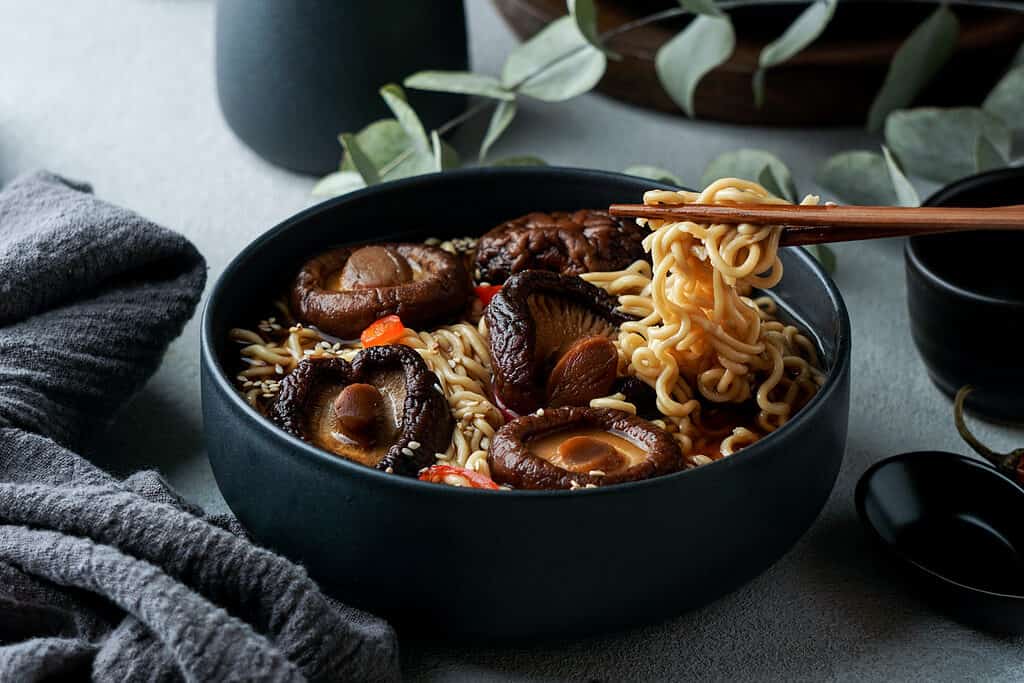
Shiitake mushrooms must be cooked before eating.
©Julia-Bogdanova/Shutterstock.com
DISCLAIMER: Always check with a mycologist to confirm your finds and before ingesting.
Shiitake are one of the most prized mushrooms in edible and medicinal fields – meaning, yes, they are safe to eat. They’re woodland mushrooms and they happen to be the second most common edible mushroom in the world. People consume approximately 10,000 tons of the species each year.
However, eating undercooked or raw shiitake can cause some uncomfortable side effects. An extremely itchy and uncomfortable rash can appear in some people in narrow strips along the skin. This usually occurs on the chest, legs, arms, neck, and back within 24 to 48 hours. This rash comes from a polysaccharide in the mushroom (lentinan) that resides in the roots of the mushroom. The compound is technically toxic, but cooking neutralizes it. The rash typically goes away within a few days to weeks. Topical steroids can resolve the irritation. There are no known life-threatening reactions.
To avoid this issue, be sure to never eat shiitake raw, cook them for at least 5 to 7 minutes, or until they’re tender and browned.
What’s the Flavor Profile?
These delectable mushrooms have an earthy, rich flavor and meaty texture. They are savory, rich, and meat substitutes in vegan cuisine.
How Are Shiitake Mushrooms Used?
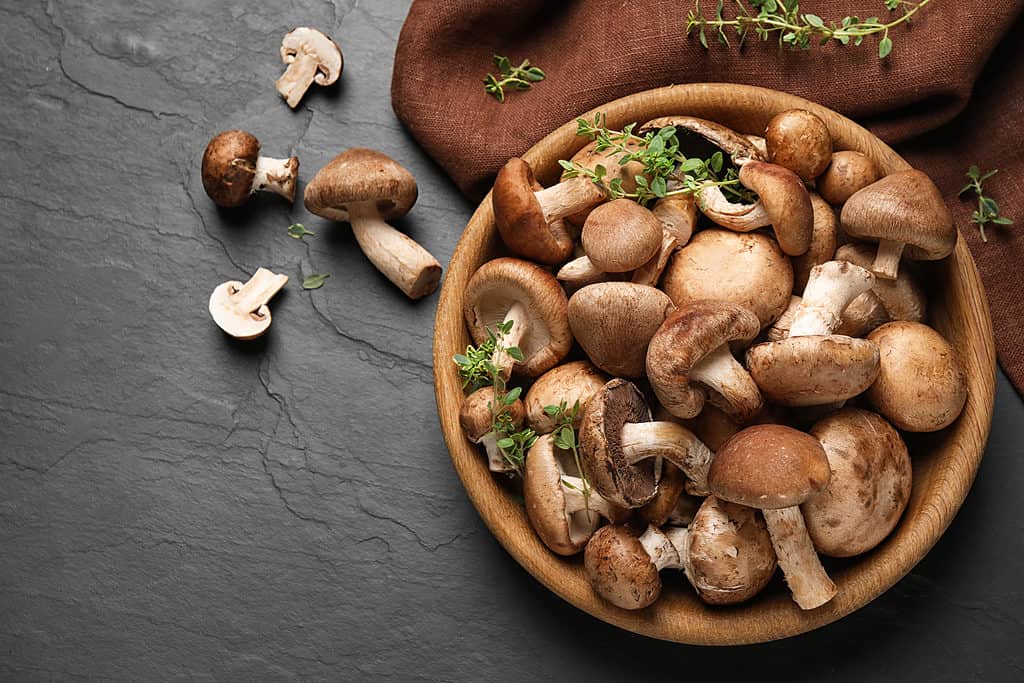
The mushrooms are known as umami in Japan.
©New Africa/Shutterstock.com
These mushrooms, known as umami in many culinary instances, have a meaty flavor a bit like portobello mushrooms. Because of this, use them in savory dishes, including vegetable dishes, soups, and salads (cooked!). They are meat replacements in vegan and vegetarian dishes.
Shiitake mushrooms are often used in miso soup, a vegetarian dish known as dashi, stir fry dishes, and a Chinese dish known as Buddha’s delight.
The mushrooms have been used medicinally since ancient times. They can be dried and rehydrated for later use and for shipping.
Are There Any Health Benefits?
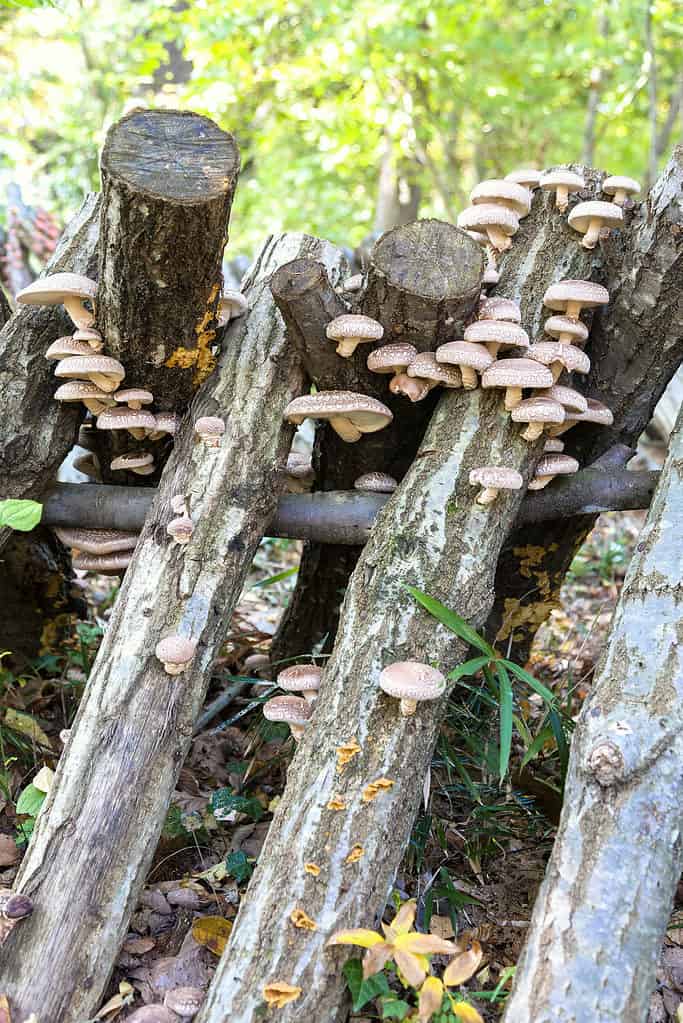
Shiitake mushrooms provide water, carbohydrates, protein, B Vitamins, copper, and selenium.
©janken/Shutterstock.com
There are many health benefits of shiitake mushrooms. The mushrooms provide multiple nutrients that the human body needs, including water, carbohydrates, protein, B Vitamins, copper, and selenium. And when exposed to sunlight directly before use, shiitake mushrooms produce Vitamin D2.
Some studies have suggested that consuming shiitake mushrooms may help improve the immune system. They may help treat certain types of cancer. The mushrooms can help improve heart health.
How Much Do Shiitake Mushrooms Cost?
Shiitake mushrooms are one of the most popular edible fungi in the world. However, they aren’t inexpensive. They typically cost somewhere between $12 and $24 a pound fresh (depending on inflation levels!) and are on the top 10 most expensive mushrooms in the world lists.
Where Can I Purchase Shiitake Mushrooms?
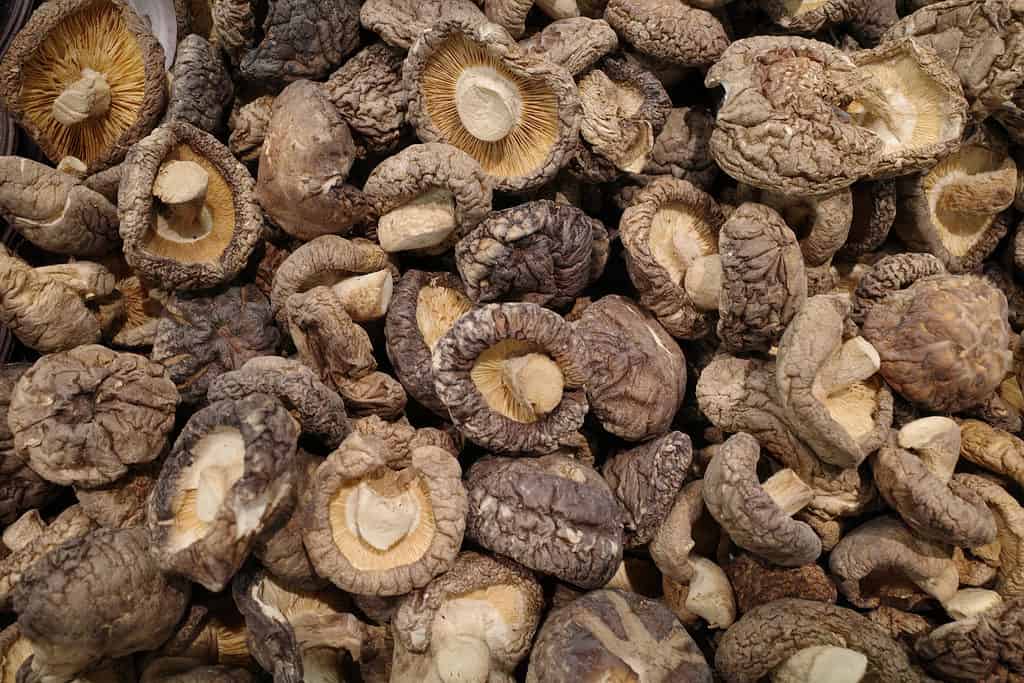
Shiitakes are often dried for preservation, storage, or export.
©Topnmp/Shutterstock.com
You can find shiitake mushrooms at many different supermarkets in the produce section. Asian markets and farmers’ markets stock them in dried and raw forms. You may also purchase the mushroom online.
If you’re interested in growing shiitake mushrooms at home, specialized garden centers, spawn supply stores, and online shops sell growing kits. Just make sure to use a reputable vendor.
How to Identify Shiitake Mushrooms
Shiitake mushrooms are fairly easy to identify in grocery aisles. However, you should never eat wild mushrooms unless you have an expert working with you to identify them.
Shiitake mushrooms have umbrella-shaped caps in browns and tans. The edges of the caps roll slightly down and inward toward the stems. The stems are usually white or cream-colored but may be brown if the mushrooms are larger.
How to Grow Shiitake Mushrooms
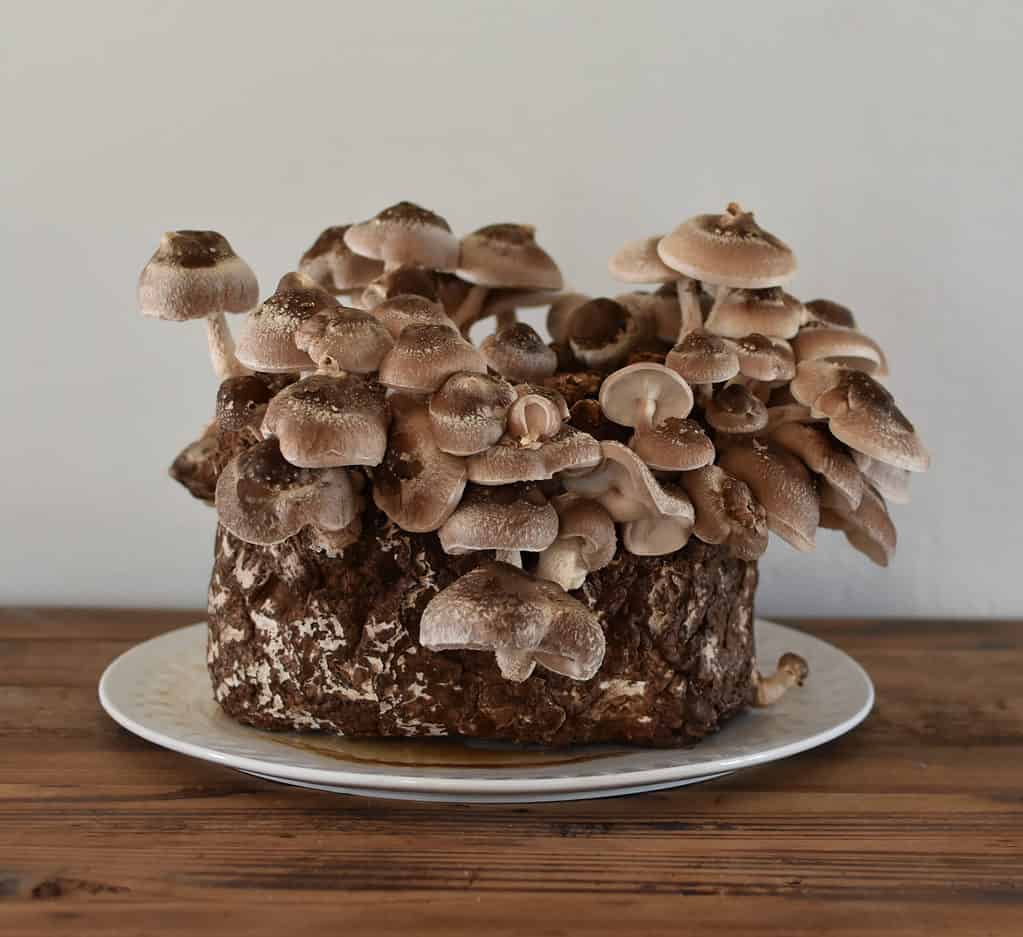
Shiitakes may be grown in various ways.
©Mary Elise Photography/Shutterstock.com
Like other fungi, shiitake mushrooms start out as live mycelium cultures or spores that spawn. These spores function a bit like seeds for plants. There are both cold and warm weather strains of shiitakes. Wide-range spores are suitable for beginners and grow year-round.
Shiitake mushrooms are fairly easy to grow from those spores. Many folks grow them in their backyards, while others use a grow box (you can easily find these online). Find a hardwood log (they love beech trees, maples, and oaks) and drill a hole into the log. Grab a shiitake mushroom kit and colonize the log with your mycelium plugs. Hammer the plugs in and let them do their work. The mushrooms should be ready to grow in about a year.
Shiitake Mushroom Trivia
Shiitake mushrooms have a fascinating history dating back to before those samurai warriors. Their current uses are pretty intriguing, too, though. They are the second-most consumed mushroom type in the entire world. They help remove toxins and heavy metals from the environment.
The photo featured at the top of this post is © janken/Shutterstock.com
The information presented on or through the Website is made available solely for general informational purposes. We do not warrant the accuracy, completeness, or usefulness of this information. Any reliance you place on such information is strictly at your own risk. We disclaim all liability and responsibility arising from any reliance placed on such materials by you or any other visitor to the Website, or by anyone who may be informed of any of its contents. None of the statements or claims on the Website should be taken as medical advice, health advice, or as confirmation that a plant, fungus, or other item is safe for consumption or will provide any health benefits. Anyone considering the health benefits of particular plant, fungus, or other item should first consult with a doctor or other medical professional. The statements made within this Website have not been evaluated by the Food and Drug Administration. These statements are not intended to diagnose, treat, cure or prevent any disease.
Sources
- Edible Wild Food, Available here: https://www.ediblewildfood.com/shitake.aspx
- Wealthy Gorilla, Available here: https://wealthygorilla.com/most-expensive-mushrooms/
- WebMD, Available here: https://www.webmd.com/diet/health-benefits-shiitake-mushrooms
- Mankato Clinic, Available here: https://www.mankatoclinic.com/blog/shiitake-mushrooms-must-be-fully-cooked-before-eating-heres-why
- Wikipedia, Available here: https://en.wikipedia.org/wiki/Shiitake
- Gro Cycle, Available here: https://grocycle.com/how-to-grow-shiitake-mushrooms/
- Eat the Planet, Available here: https://eattheplanet.org/shiitake-mushrooms-easy-to-grow-in-your-own-backyard/
Thank you for reading! Have some feedback for us? Contact the AZ Animals editorial team.




